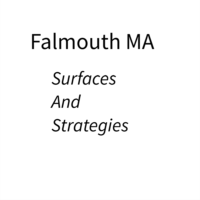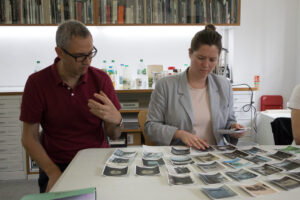Week 1 of Module 3 was required us to explore “strategies of looking”. During the break between modules I had continued to work on my main project ‘Tilbury to Harwich’ as part of the project I spent time in Chelmsford Records Library gathering research material on the history of the Essex Coastline part of that research included the ports along the coast. One of the books contained information of the barges used to transport goods to London.
Intent
The purpose of this shoot was to visit the Promenade in Maldon with the purposes of creating a rephotography image where I would take an image of the Promenade today while holding an image from the 1920s when Barges were used for commercial purposes rather than a leisure craft today.
Equipment Used
I set myself the objective of using the minimum amount of equipment necessary to complete the rephotography task in effect simulating the level of equipment the original photographer would have had to create the images of Maldon. I decided to take a mirrorless digital camera with a fixed focal length lens and a tripod. The tripod would simulate how the original photograph might have been taken and secondly would allow me to hold the original photograph in the frame of the new image.
Methodology
The methodology for this project was one of rephotography where ensuring that the framing of the new image was a close as possible to the original image. The key to completing the activity was to identify features in the original that could act as visual cues to frame the new image. Fortunately for me the promenade area of Maldon has remained relatively unchanged for over 100 years. Therefore I was able to identify a number of triangulation points to aid framing. I concluded that the image was taken at low tide as the photographer place their tripod in the mudflats below the promenade wall. In recent years barges have returned to Maldon Quay this time for leisure purposes but helped to tie the images together.

Any Research References
Prior to going to the Maldon Promenade I did some research using google maps to identify the approximate location occupied by the original photographer and location of the reference points within the photograph. Prior to the introduction of google maps I would have used ordnance survey maps to help identify reference items however I would have had to spend longer on site to confirm features which could have resulted in me missing the correct tide level and them would have had to return multiple times to get the correct combination of elements to increase the connection between the two images.
Assessment of outcome
The use of modern research tools such as google maps made executing this location based shoot much easier that it might have been twenty years ago. If I had used a film camera for this project I would have ended up taking multiple images but would have left Maldon not sure if I had created my desired image. The use of a digital camera and the ability to view the display on my smartphone simplified the task of framing the image which meant I could complete the objectives within 3 frames. Finally I was able to complete the task in a single visit knowing I had completed my objective. This was especially important as I had a limited timeframe to be able to present the results of my work for this week’s activity.



